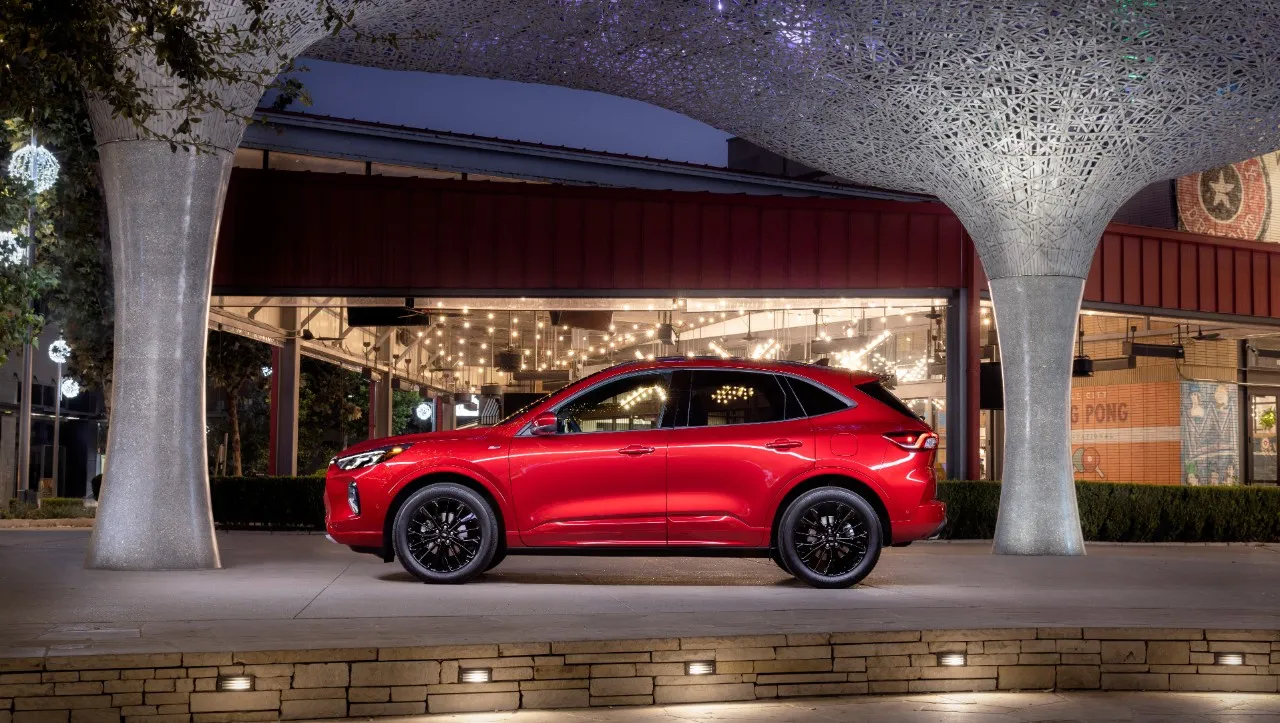Nissan Rogue vs. Ford Escape: Compare Crossover SUVs
As compact crossovers, the 2024 Ford Escape and 2024 Nissan Rogue are two popular entries at what’s considered one of the nerve centers of the U.S. vehicle market—largely replacing the midsize sedan in the American family landscape.
Both offer a lot of interior space and comfort, plus well-rounded feature lists, with available all-wheel drive and a little more ground clearance than passenger cars, mostly adding up to an easier time getting in and out. Neither one is designed to satisfy performance purists, but the Escape is offered in a wider range of versions, including a sporty ST-Line plus mileage-focused Hybrid and Plug-In Hybrid versions.
Which one’s better rated, in the opinion of our experts? Here’s how we break it down.
2023 Ford Escape
Nissan Rogue vs. Ford Escape prices and features
-
Base Rogue starts below $30,000
-
Base Escape starts at about $30,000
-
Both models top out at around $40,000, except the Escape Plug-In Hybrid is higher yet
-
Best picks: Rogue SL, Ford Escape ST-Line, Escape Hybrid Active
How much is a Nissan Rogue?
The Nissan Rogue is offered in S, SL, SV, and Platinum models, with base S versions starting at just under $30,000. Top-level Platinum versions cost about $40,000. On any of those trims, all-wheel drive is a $1,500 premium over front-wheel drive.
Options are limited on the Rogue, and they consist of a few comfort-oriented extras. Examples include the Platinum Premium Package on the Platinum, which gains rear heated seats, tri-zone climate control, and a head-up display.
The Rogue SL probably represents the best value, and it can be optioned with a Premium Package that adds a power tailgate, upgraded infotainment, and Bose audio, among other extras, adding up to about $38,000.
How much is a Ford Escape?
The Ford Escape spans a wide range of prices depending on the powertrain (turbo-3, Hybrid, or Plug-In Hybrid) and whether you choose front-wheel drive or all-wheel drive. It starts at about $31,000 for the base Active version with the turbo-3 and front-wheel drive or about $33,000 with all-wheel-drive. A panoramic roof and one of two large tech option packages can also drive prices up toward the $40,000 mark.
The Escape Plug-In Hybrid costs about $42,000. Only offered in front-wheel drive form, it can be loaded up to about $47,000.
For turbo-3 and Hybrid models, the top trims are the Platinum or ST-Line Elite, at about $40,000 and $41,000, respectively. An ST-Line can be loaded to $46,000.
The ST-Line series of trims takes a sportier tack with a black mesh grille, rear skid plate, and rear wing spoiler, plus red stitching and seat trim, a center armrest, and more. A firmer suspension, flat-bottom steering wheel, and 18-inch wheels are also added.
Advantage: The Nissan Rogue, with its lower bottom line.
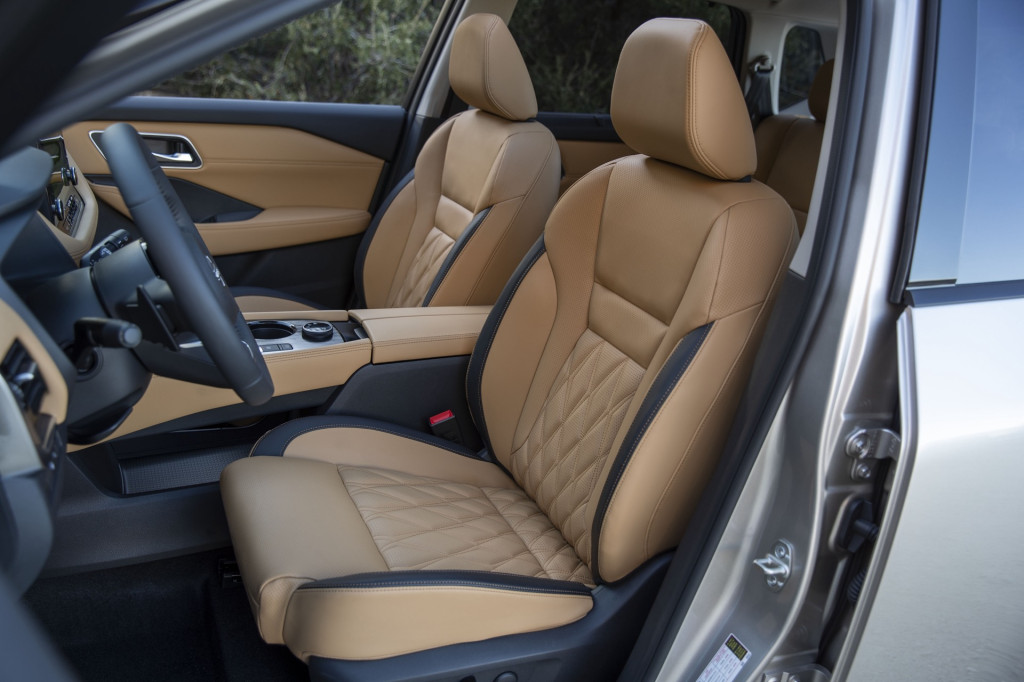
2023 Nissan Rogue
Ford Escape vs. Nissan Rogue size, seating capacity, and cargo space
-
The Rogue is a little longer and taller, the Escape is a little wider
-
In overall passenger volume they’re virtually identical
-
The Rogue feels larger than the Escape inside—more than the numbers indicate
Comparing Escape and Rogue in overall size, it’s a tossup. The Ford Escape measures about 180 inches long by 74 inches wide and 66 inches high, and it rides on a wheelbase about 107 inches. The Rogue, on the other hand, measures about 183 inches long, 72 inches wide, and 67 inches high, with a wheelbase also about 107 inches.
But by official passenger volume the difference is subtle—104 cubic feet of total passenger volume for the Escape and just over 105 cubic feet for the Rogue.
The sense of a space advantage in the Rogue is more obvious when you fold the seats down: 74 cubic feet behind the front seat in the Rogue vs. about 65 in the Escape. Cargo space with the seats up tells a somewhat different story—although the Divide-N-Hide partition in the Rogue SL and Platinum levels helps boost its cargo space to 36.5 cubic feet.
Passenger dimensions don’t show any distinct advantage to either. But between the two, the Rogue has more comfortable seats. It may be the psychological effect of the Rogue’s seemingly wider door cuts, or its seat height, but we suspect the Rogue will feel slightly roomier to most.
Advantage: The Rogue offers more cargo space.

2023 Ford Escape ST-Line
Ford Escape vs. Nissan Rogue towing
-
Skip the Rogue if you plan to tow with any regularity, however small
-
Choose an Escape version with the 2.0-liter turbo-4 to tow up to 3,500 pounds
-
Even Hybrids can tow—a little bit
The Rogue is approved to tow just 1,500 pounds, with just 150 pounds on the tongue. Its CVT design tends to be inferior for towing.
The Escape is the champ here, with tow ratings that span up to 3,500 with a Trailer Tow Package and the 2.0-liter inline-4. The base turbo-3 can pull 2,000 pounds in front- or all-wheel-drive versions, the Hybrid can pull 1,500 pounds, and even the Plug-In Hybrid is good for 1,500 pounds.
Advantage: The Escape, for occasional towing.
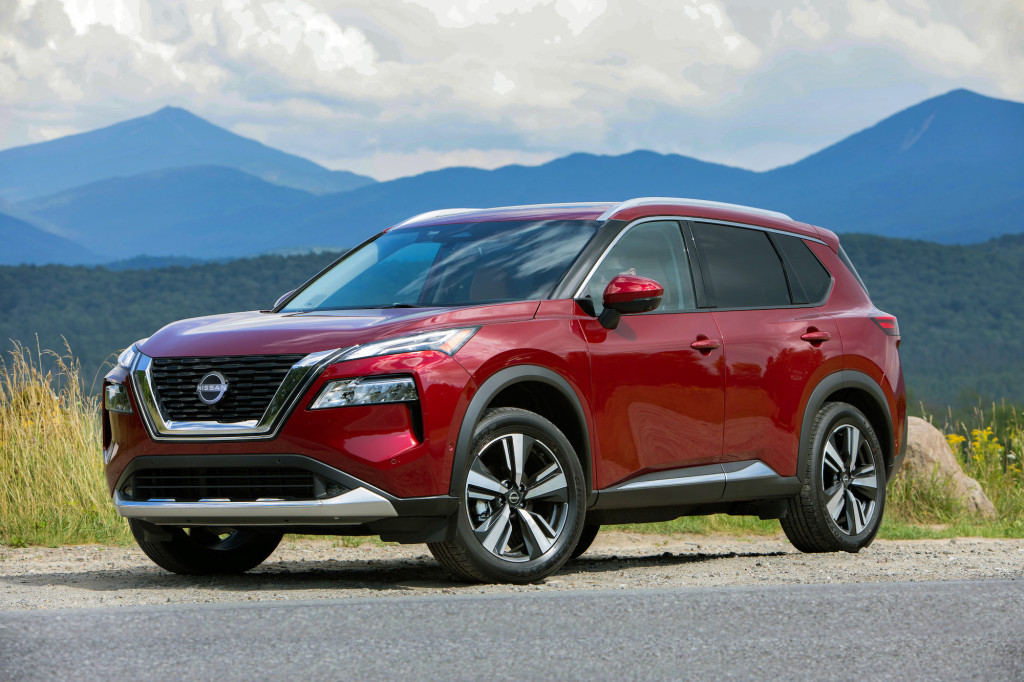
2023 Nissan Rogue
Nissan Rogue vs. Ford Escape off-roading
The Nissan Rogue offers 8.2 inches of ground clearance, while the Ford Escape has about 7.5 inches of ground clearance in its gasoline form, depending on the version. Escape Hybrid and Plug-In Hybrid versions offer a bit less.
In its stock form, all-wheel-drive versions of the Rogue have a suspension tune that makes them just a little more forgiving for rocky trail use.
That said, neither of these models offer true undercarriage protection for off-roading or are really all that rugged—the Escape ST-Line’s rear skid plate is mostly for show for instance. Both versions in their all-wheel-drive form will be able to tackle snowy driveways though, and the occasional muddy or sandy campsite access.
Advantage: The Rogue, but you really shouldn’t buy either of these for off-roading.
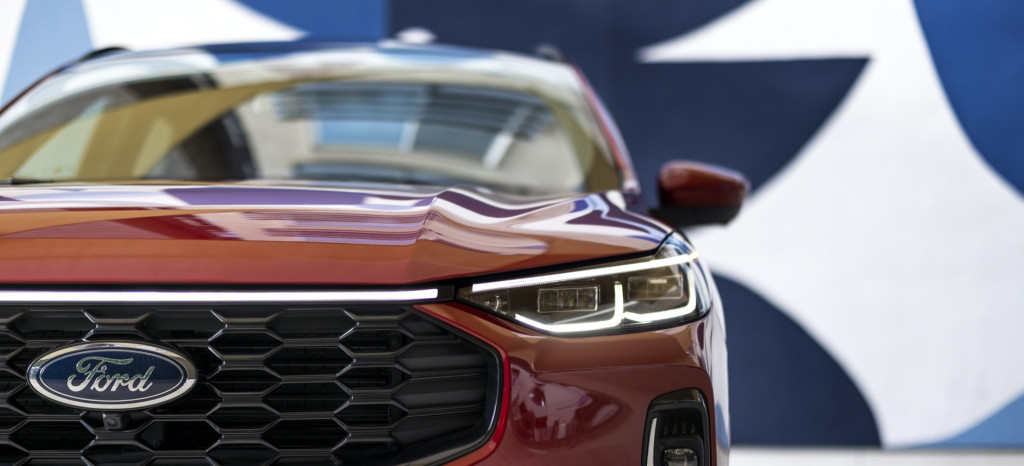
2023 Ford Escape ST-Line
Ford Escape vs. Nissan Rogue safety
-
The list of standard active-safety items is impressive for both
-
Neither earns the IIHS’ top nod
-
The Ford Escape has a few more safety options
Under tighter IIHS criteria, the Nissan Rogue is no longer in the upper echelon for safety. Its “Marginal” results in the updated moderate overlap front test and “Acceptable” results for side impact in the updated test make it good but not the best. It has been given a five-star overall rating by the NHTSA, though.
The Ford Escape gets mostly top ratings from the IIHS, but its rating is just “Marginal” in that agency’s updated side impact test. And in NHTSA testing, the Escape achieved five-star results frontal, side, and overall.
Both of these models offer automatic emergency braking and blind-spot monitors standard, plus headlights that have tested well. And you can get adaptive cruise control, which some may see as a safety feature, on both the Rogue or the Escape This year the Escape adds a stepped-up safety set with available rear cross-traffic braking and an evasive-steering feature.
Advantage: It’s a tie.
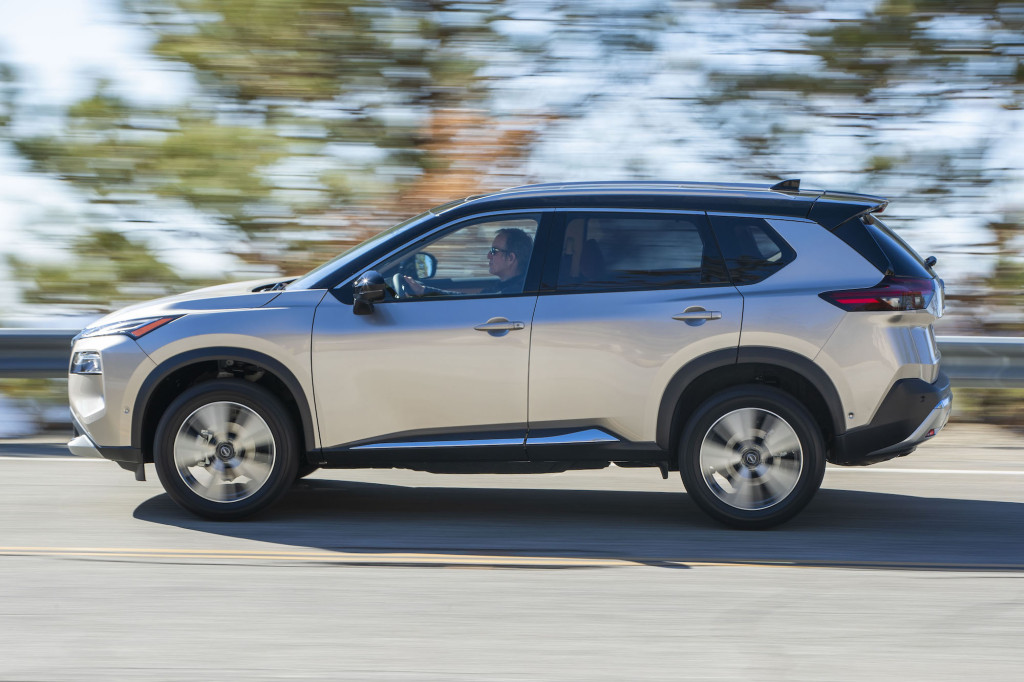
2023 Nissan Rogue
Nissan Rogue vs. Ford Escape performance
-
Rogue has more power and torque, but in base versions acceleration is about the same
-
Escape is more responsive in passing, more engaging in handling
-
Hybrid versions are more sluggish but reward in mpg
Both of these mainstream crossovers are powered by an engine that would have been a fringe player a few years ago: a 1.5-liter turbo-3. The Rogue’s turbo-3 makes 201 hp and 225 lb-ft of torque, while the Escape’s like-sized engine makes 180 hp and 199 lb-ft.
The tables are turned in real-world drivability, though, as the Rogue’s CVT feels sluggish and reluctant to perk up for quick passes—even if the power’s there. The Escape’s 8-speed is far more flexible, counterintuitively. And by the stopwatch it’s a tossup; with those base engines, both the Rogue and the Escape can get to 60 mph in a bit under eight seconds.
The Escape offers a couple of other powertrains. The 2.0-liter turbo-4 makes 250 hp and 280 lb-ft of torque—a big difference, with a 0-60 time under six seconds and plenty of passing power. Escape Hybrid models, with their combined output around 200 hp, aren’t even as quick as the turbo-3 but make up for it in gas mileage.
Rogue vs. Escape ride and handling attributes are very different, so take them for a test drive. The Escape doesn’t feel at all like Ford’s larger SUVs, and the Rogue doesn’t feel particularly nimble. Or, to sum this up, the Escape drives like an SUV with sharp compact-car bones, but the Rogue has a cushier way of riding and handling that feels like a smaller take on the larger Pathfinder.
Advantage: The Escape, for its sharper handling and available higher-output turbo-4.
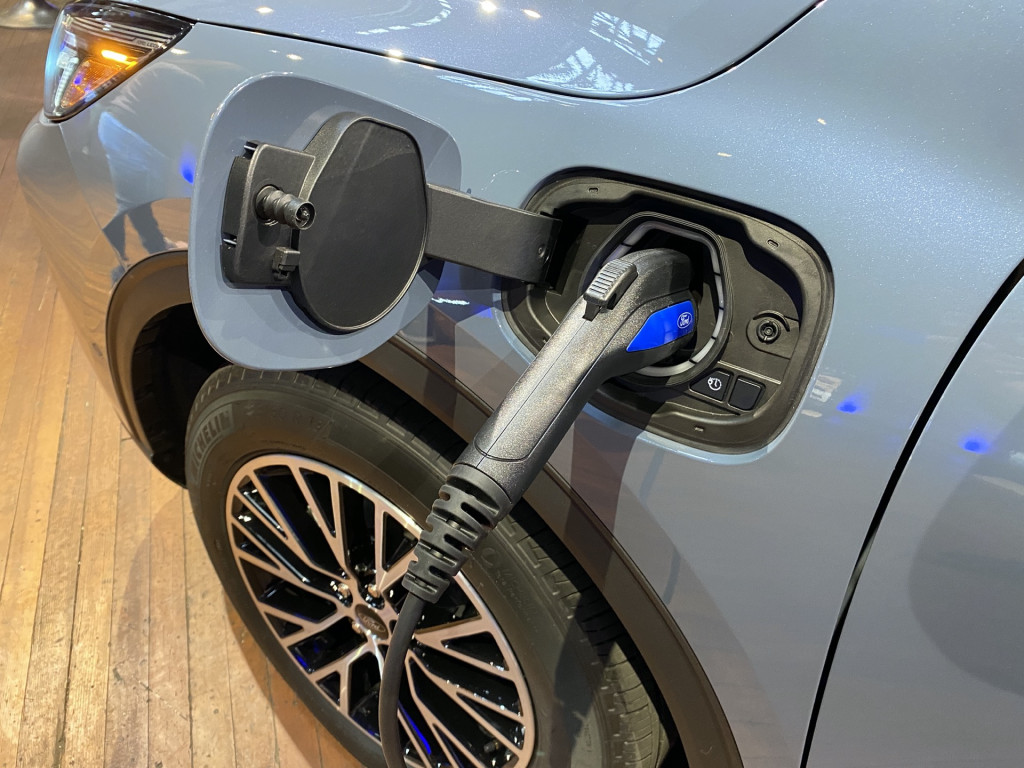
2023 Ford Escape Plug-In Hybrid
Ford Escape vs. Nissan Rogue fuel economy
-
With base turbo-3 engines, the Rogue is more fuel-efficient
-
AWD drops combined mileage more for Escape than for Rogue
-
Escape Hybrid models top 40 mpg
The Nissan Rogue gets up to 30 mpg city, 37 highway 33 combined, for base versions, while the others are at 1 mpg less. AWD drops another 1 mpg, for 31 mpg combined.
The Ford Escape is an interesting case as standard non-hybrid versions aren’t nearly as efficient as the Rogue. Escape models with the turbo-3 base engine achieve 27 mpg city, 34 city, 30 combined, while all-wheel-drive versions drop to 26/32/28 mpg. AWD models with the 2.0-liter turbo-4 aren’t much lower, at 23/31/26 mpg.
But the Escape is offered as a hybrid, and Hybrid models, whether with front-wheel drive or all-wheel drive, are rated at an exemplary 42 mpg city, 36 highway, 39 combined.
In previous model years the Escape Plug-In Hybrid has achieved 37 miles all-electric and then 40 mpg combined.
Advantage: Escape Hybrid

2023 Nissan Rogue
Nissan Rogue vs Ford Escape interior and tech
-
The Rogue’s 8.0-inch touchscreen pales next to the Escape’s 13.2-inch touchscreen
-
Both have average warranty coverage
-
Rogue trends to soft and warm for cabin trims, Escape to austere and sporty
Looking at the base versions of the Escape and Rogue, both include Apple CarPlay and Android Auto compatibility, and both models can be optioned with parking-assist systems, adaptive cruise control, and a head-up display. But while the Rogue has an 8.0-inch touchscreen, the Escape’s new base Active trim sports a 13.2-inch touchscreen interface and 12.3-inch instrument cluster that feels a step up in sophistication. Top Platinum versions of the Rogue get a 12.3-inch digital dash and larger 9.0-inch touchscreen.
That said, the Rogue wows with the inclusion of a few features normally reserved for luxury brands. An available panoramic sunroof, nappa leather seats, and Bose audio can all be had on the top-trim Platinum, if you’re willing to top $42,000.
The Rogue also does a more convincing job of looking upscale, with better-coordinated touch points and trims. The Escape’s cabin tracks toward the overuse of dark, shiny trims that make its cabin feel more like that of an elevated compact car.
Advantage: The Nissan Rogue has no tech advantage, but it’s more convincingly posh.
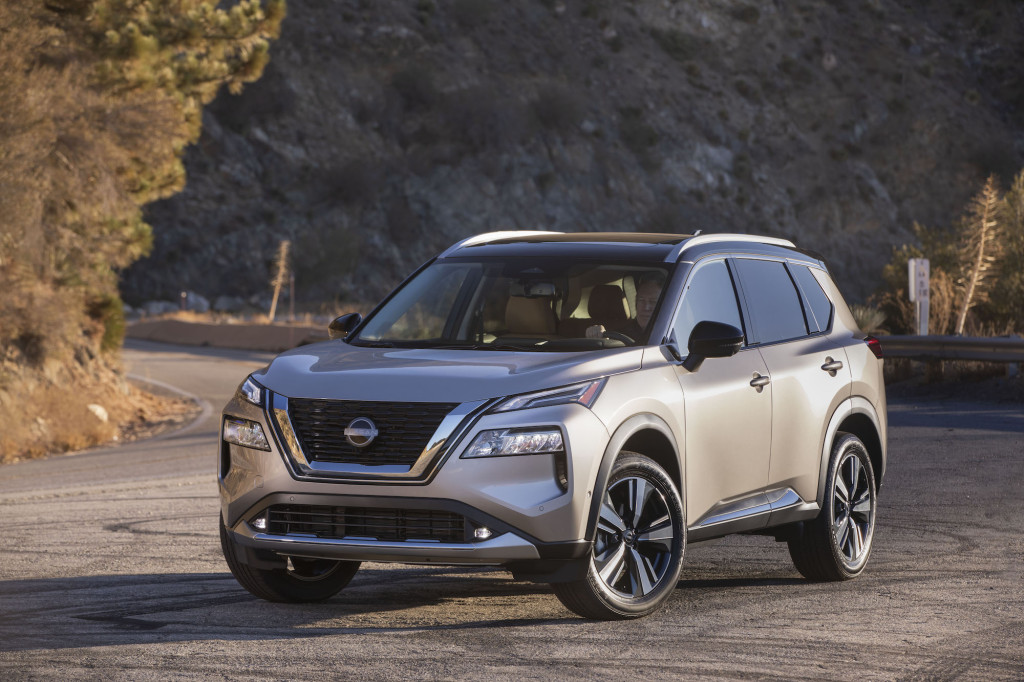
2023 Nissan Rogue
Which is better: Rogue or Escape?
The Nissan Rogue achieves a TCC Rating of 6.3 out of 10, while the Ford Escape earns a 6.7 out of 10. The Rogue excels at comfort, spaciousness, and value while the Escape wins on ride and handling, its plug-in option, and infotainment.
